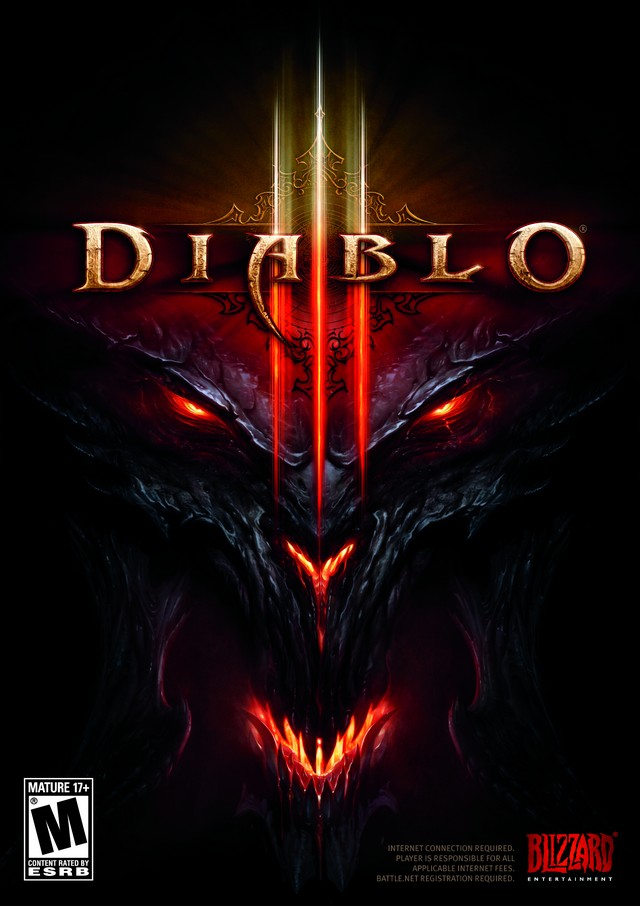Diablo III Preview
-
Category: PreviewsHits: 23310

Article Index
Page 5 of 6
Crafting has also been pushed to the forefront in Diablo III. Though only straight-up item crafting/smithing is available in the beta (the other two are enchanting and socketing), the system shows a huge deal of promise and is much more extensive and enjoyable to use than Diablo II's. After completing a quest early on, you'll be able to use the Nephalem Cube to break down items into their base components - standard items provide simple junk, while magical ones provide their magical essence, rare items produce rare ingredients, and more. Once you've got enough, the smith can create different various weapons and armor for you. Crafting in itself features a bit of a leveling system. During dungeon crawling, you'll find Pages of Training, which can be formed into Tomes of Training once you've found five pages. Offer these to a given crafting NPC, along with a sum of gold, and new items will be unlocked. You start out with simple Apprentice-level items, featuring a handful of random magical modifiers, but as you train a given Artisan, they're capable of creating better and better gear for you. On occasion, you'll find crafting recipes which allow you to create rare items, and perhaps even higher tiers later on.
While I only got a taste of it, crafted gear was always better than standard item drops and magical items, and breaking junk items down is a great alternative to simply selling them. The rare items I found, when they were of use to me, were usually a little better, but not by much, and the balance is currently such that one inventory's worth of junk items can produce about three or four good crafted items, which is a fair number given the investment. Meanwhile, the crafted rare items were also slightly better than ones I found while dungeon crawling, so there's incentive to keep playing to craft the best gear you can.
Beyond crafting, class-specific items return much as they did in Diablo II's expansion, although you won't see any "+skills" items due to the changes to the skill system. Wizards get Wands, Wanderer Hats and Eagle Orbs (the latter behaves a bit like the Necromancer's Shrunken heads in Diablo II), Witch Doctors have Tribal Masks and Wanga Dolls (similar to Eagle Orbs), Barbarians get Warrior Belts and Scythes, Monks get Knuckles, Spikes and other hand weapons, and Demon Hunters have Quivers, Cloaks and Hand Crossbows (which can be dual-wielded). No doubt more will surface later in the game, but if there's one criticism, it's that aside from giving characters more visual distinctiveness, the class-specific items don't feel as rare or special as they did in Diablo II, and there's rarely a reason to use a generic item instead.
... And The Rest
There's a whole bunch of other new things in Diablo III that probably deserve to be covered, but don't really warrant their own discussion. Storytelling, for one, has changed a little bit, with less in the way lore dumps and more uncovered as you work your way through dungeons, via found journals, scripted sequences, etc. Sometimes, characters will accompany you to locations and speak on the way, which is a good deal more entertaining than just standing around in town listening to them.
Another change is to the player characters themselves, which all have different voices and dialogue, and very distinct personalities: the Demon Hunter is appropriately brooding, the Barbarian is wise and practical, and the Wizard is pompous and self-absorbed. Once again, I think this is a nice touch, but unfortunately it also means that sometimes the dialogue between characters doesn't flow very well, as NPC responses are always the same; at times it feels as if your character is a little separated from the actual conversation, despite the fact that the effort was made to solve that very problem of text dumps. As not even dialogue seems final at this point, there might be room for improvement in time for release.
Followers have also received a bit of an overhaul, mostly in that you can choose their skills. Only the Templar (a bit of a Paladin-type) is featured in the demo, but for the short time he's available, he's pretty handy. Follower ability progression is quite limited, with a selection between one of two skills at preset levels (5, 10 and 15 right now), but the Templar was more than happy to kill monsters, could be outfitted with armor, a weapon and a shield, and used his skills when appropriate. They also tie into the storyline a little, and will offer commentary as you explore, which helps add interest during dungeon crawling. Though not a revelation compared to Diablo II's, the new followers are still worth keeping around.


